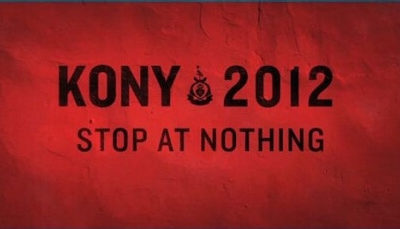One of the essential events of our year so far was Invisible Children’s viral campaign, KONY 2012. This campaign consisted of a 30-minute video, a supporting physical campaign of products, shirts, and items, and an enormous viral reaction, with the video reaching over 70 million viewings in four days. The closest video to growing this fast was Susan Boyle’s video premiere on Britain’s Got Talent, which took seven days to reach 70 million views.
But this was months ago. When was the last time you saw a Kony 2012 video posted on Facebook? As I searched across the Internet, I found little evidence that the campaign had any real effect. I asked myself, Did Joseph Kony ever get brought to justice? It seems that Kony is known everywhere, but what happened after everyone’s Facebook feeds refreshed? Are we more culturally aware or are we just as lazy and self-centric as before?
Kony Is Still Going
It seems that while KONY 2012 died off a few months ago, Invisible Children is still running a strong campaign. For Dan Krozner, it hasn’t died off at all. Krozner is the street team leader in Chicago for Kony 2012, alongside his wife, Kim. “We are doing a bunch of different things at Invisible Children,” Krozner said. “We are working to build a little bit of Invisible Children community in our cities. We are reaching out to work with local schools, non-profits, businesses, and artists to work together in creating a positive collective that can influence change here and in Central Africa.” For Krozner, the campaign to promote the fight against Kony never ended. It only disappeared from the Facebook agenda, and therefore, the majority of people who were integral to its popularity.
Despite lack of public interest, KONY 2012 hasn’t disappeared from Congress’ plate. Invisible Children reported that the Tom Lantos Human Rights Commission hosted a hearing with its founders in order to get a feel for the topic. Congress seemed to show a strong support, especially Representative Jim McGovern, who hosted the hearing in light of KONY 2012.
The campaign also succeeded in its attempt at allowing the US counselors assisting Ugandan troops-in-training to help stop Kony. Invisible Children’s success came about despite all of the negative criticisms that have arisen as the weeks went by.
KONY 2012’s Critics
Digital entrepreneur and child advocate Evan Bailyn claims that the sharing of the video occurred so quickly because of the, “perfect mixture of elements needed to turn a good cause into a social explosion: a clear bad guy…an inspiring plan of action and…an invitation to find the compassion in our hearts.”
The claim of “slacktivism” seems to be a popular criticism against KONY 2012 because most people who clicked “Like” on Facebook were not ones who wished to actively participate in the events sponsored by Invisible Children. A clear example came about when Australian news reports noted that over 19,000 people said they would attend Kony 2012’s event Black Out the Night, but only a meager 25 participants seemed to show up.
The scheduled event may have been eclipsed by co-founder Jason Russell’s behavior shortly after the video’s popularity skyrocketed. Russell, in a naked and drunken state performing a number of obscene acts, was arrested for disorderly conduct. Russell’s wife declared that Russell was under high amounts of stress, leading to exhaustion and his unusual behavior.
Although no charges were filed, the incident had a destabilizing effect on Invisible Children’s mission. Media outlets connected not only Joseph Kony to Invisible Children, but also phrases like “public masturbation” and “break from reality.” At the point in which Russell’s behavior garnered more attention than his cause, the entire campaign was up for criticism and quickly lost momentum.
And even if Russell’s arrest wasn’t bad enough, reports show that many Ugandan citizens have also come out against the video, stating that it was highly inaccurate. Ugandan Prime Minister Amamma Mbabzi stated that, “The Kony 2012 campaign fails to make one point clear: Joseph Kony is not in Uganda.”
Mbabzi clarified that the conflict had moved outside of Uganda, and that the LRA (Kony’s established army) decreased from “several thousands to a few hundred men.” While Kony needs to be punished for everything he has done, his threat has significantly diminished since 2006: the last time Kony and the LRA were in Uganda.
Results of Kony 2012
While we see congressional activity leaning towards helping Uganda and supporting Invisible Children, it is Uganda that seems to believe that these actions are unnecessary, even unhelpful for their country. Also, we saw how a high response on the Internet doesn’t necessarily imply a high response in real life.
While their facts were questionable, Invisible Children still encouraged thousands of men and women to do something. People across the world took the first step by sharing the video, but the crowds never took their activism to the next level.
So where did the momentum go? Some blame the criticisms of Invisible Children, others blame Russell and his crazy actions, and then there are those who simply say that we’re just too lazy. I believe all three claims to be right; Kony 2012 advocates were scared off by the campaign’s problematic elements, as well as their inherently lazy nature.
In conclusion, it’s everyone’s fault. Invisible Children’s idea had one too many unforgettable blemishes, and most people weren’t willing to take the next step. I commend every member of Invisible Children for trying to change the world but they could never have predicted how undedicated their followers would be.



















